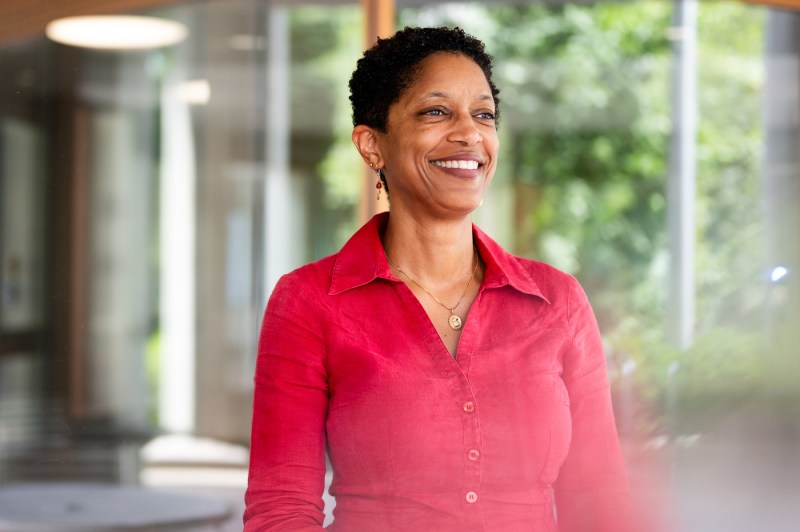Mary Prince’s legacy gets the spotlight in new book with help from this Northeastern professor
Edited by Northeastern’s Nicole Aljoe, a new Cambridge Companion pulls together various scholars’ perspectives to show why the slave narrative “The History of Mary Prince” is such a landmark text.

When “The History of Mary Prince” was published in England in 1831, it set off a firestorm.
Prince’s account of her experience as an enslaved woman in the Caribbean was the first of its kind to be published in Great Britain. It arrived at a time when the abolitionist movement was gaining more and more traction, and the vivid, brutal detail and direct prose of Prince’s story added fuel to the movement. It spawned two libel lawsuits, both of which Prince testified in, and sold out its first three printings within a year.
However, in time, Prince’s narrative was relegated to the dusty shelves of history by literary scholars who deemed it less authentic because it was dedicated by Prince, not written in her own hand. Now, with “The Cambridge Companion to Mary Prince,” a new edited volume of scholarship focused entirely on Prince’s narrative, a Northeastern University professor hopes to thrust this landmark text back into the spotlight.
“She documents that she has these really awful, terrible experiences but still at every opportunity she’s trying to better herself,” says Nicole Aljoe, an English professor at Northeastern and editor of the new Cambridge Companion. “She’s trying to achieve liberty in some way, shape or form.”

Like the other volumes in the Cambridge Companion series, “The Cambridge Companion to Mary Prince” features chapters from a variety of scholars from different disciplines to provide an overview of a specific author or literary period. Here, all the scholars, including Aljoe, are focused on giving the reader a holistic sense of what still makes Prince’s narrative so vital.
Aljoe, an expert in Caribbean slave narratives, explains that most of the other major accounts published by enslaved people came from the American perspective. The likes of Frederick Douglass and Harriet Jacobs, whose books regularly appear on Black history curricula, helped fuel the abolitionist movement in the U.S. with searing firsthand accounts.
Prince’s story provided unprecedented insight into what was happening in the British colonies. Born into enslavement in Bermuda, Prince was sold from enslaver to enslaver, laboring as a child in the salt mines for 17 hours at a time when she wasn’t getting beaten at home.
However, what makes Prince’s narrative so powerful and so enduring is all the ways she fights to take “active ownership in terms of her destiny,” Aljoe says.
Editor’s Picks
In the Caribbean, enslaved people could, to a certain extent, negotiate their working conditions by going to another enslaver and asking to work for them, something Prince did several times. She sold goods in informal markets to earn some money. She also converted to Christianity both as a genuine spiritual practice but also as an attempt to leverage its power. During the 19th century, there was ongoing discourse around the idea that Christians can’t be enslaved.
“This is the way you access power,” Aljor says. “She was determined to read the Bible and learn all about Christianity just to show everyone how deserving she is of liberty.”
Eventually, Prince moved to England with her enslaver, John Adams Wood, where she met abolitionist Thomas Pringle. He would serve as Prince’s editor, while a woman named Susanna transcribed her story (Prince had limited literacy). After slavery was abolished in 1833, Prince largely disappeared from the historical record.
Although Prince only has one published account, the text is rich enough to support a book full of scholarship from various disciplines, Aljoe says.
Sarah Connell, associate director of the NULab for Digital Humanities and Computational Social Science and a Northeastern Ph.D. recipient, used Prince’s text as a way to explore the thorny questions involved with digitally picking apart historical texts.
“I have all of these hard-edged tools that are very good at doing exactly what you tell them to do,” Connell says. “But this is a text that doesn’t really let you sit comfortably with any of those precise formalisms. It doesn’t let you say, ‘I know how to count places because I know what a place is.’ It’s challenging those sorts of perspectives immediately.”
Meanwhile, Elizabeth Polcha, another former doctoral student from Northeastern who now teaches at Drexel University, approached “The History of Mary Prince” from an environmental studies perspective. Polcha found Prince’s narrative instructive in how it connects abolition, colonialism and the environment in ways that “can help us change the way we think about the environment,” she says.
Whether she was working in the salt mines or breaking up coral reefs, “the very way that [Prince is] thinking about what abolition means is informed by all of the environmental labor that she was doing in the colony as an enslaved person,” Polcha says.
However, regardless of how you look at Prince’s story, the thing that remains most powerful is her relentless fight for agency and liberty, a constant battle made up of little steps “to maneuver in a system that’s intended to oppress her,” Aljoe says.
“It’s just amazing to me every time I read it just how agentive she is,” Aljoe says. “She tells her history. She narrates it. She says, ‘Although this is what I was told, this is what I believe.’”










